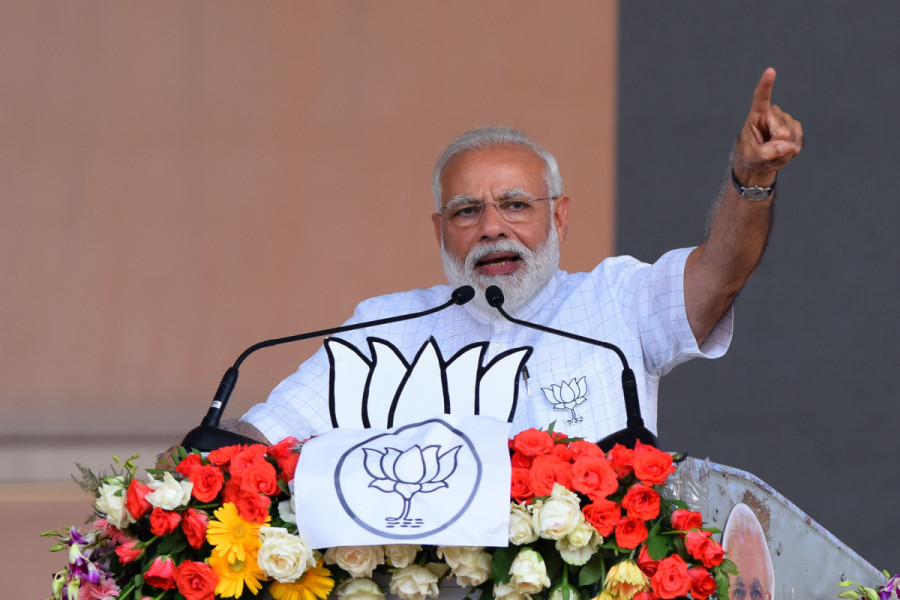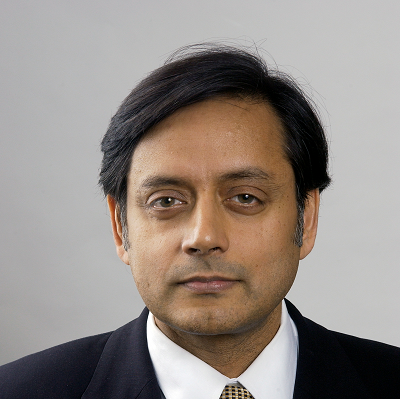Columns
India’s Hindu ‘emperor’ wants a third term
During his decade in office, Modi has increasingly asserted the dominance of Hindu Indians.
Shashi Tharoor
India begins the New Year with a general election looming, and the battlelines are already clear. On one side is Prime Minister Narendra Modi and his ruling Bharatiya Janata Party (BJP). On the other is a slew of opposition parties that are largely, though not wholly, clustered around the Indian National Congress party, and together form the Indian National Developmental and Inclusive Alliance (INDIA).
The BJP’s narrative has undergone significant changes during the party’s decade in power. During the 2014 campaign, the BJP’s slogan was achhe din aane waale hain (“good times are coming”), and Modi, who had been chief minister of the prosperous state of Gujarat since 2001, was portrayed as an avatar of economic development. As prime minister, the narrative went, he would transform the Indian economy, bringing prosperity—including 20 million new jobs per year—to all.
Far from delivering broad-based prosperity, during his first term Modi oversaw a disastrous demonetisation process that nullified 86 percent of India’s currency in one fell swoop, causing widespread hardship and mass unemployment. So, for the 2019 election, a new narrative was needed.
The BJP found it when, two months before the vote, Pakistan-based militants carried out a suicide attack in the Pulwama district of Kashmir, killing 40 Indian paramilitary troops. The BJP then went to work recasting the election as a national-security referendum. Modi, previously portrayed as the former CEO of Gujarat, Inc., was positioned as a warrior with a 56-inch chest who would keep India safe from Pakistani depredations. A much-hyped Indian air strike targeting an alleged militant base inside Pakistan sealed Modi’s new image and tilted the electorate in his favour, especially in the northern Indian states.
But, during his second term, Modi again failed to live up to the narrative that got him elected. His assiduously cultivated tough-guy image might have played well against his domestic opponents, but it did not impress China, whose military has steadily encroached on its disputed Himalayan frontier with India.
It was on Modi’s watch that 20 Indian soldiers were killed in the first deadly clash with China in the area in at least 45 years. China has also managed to cut off India’s access to 26 of 65 points that used to be patrolled by both sides. Modi has failed to secure a withdrawal of Chinese troops and restore the status quo ante.
So, the national-security narrative of 2019 has also lost credibility, compelling the BJP to devise yet another for the coming election. As 2024 begins, they are seeking to portray Modi as a Hindu Hriday Samrat—an “emperor of Hindu hearts.”
In a sense, the BJP is going back to basics with this approach. It has long been known as the party of Hindu nationalism, and Modi himself is associated with a notorious anti-Muslim pogrom that left nearly 2,000 people dead in Gujarat in 2002 (when he was chief minister). It was partly to shake off this association that Modi was reinvented as an economic hero in the 2014 campaign, though even then, the BJP proclaimed Modi’s religious nationalism on billboards.
During his decade in office, Modi has increasingly asserted the dominance of Hindu Indians, who comprise some 80 percent of the country’s population. A series of government actions advanced the BJP’s goal of unravelling the cosmopolitan secularism that characterised Indian politics for more than six decades after independence.
Now, the BJP is doubling down on its portrayal of Modi as a true Hindu, and thus a more authentic representative of “the people” than the left-leaning secularists he replaced. This effort will reach a crescendo on January 22, when Modi inaugurates the Ram Mandir temple in Ayodhya.
The BJP long promised to build a grand Hindu temple at the site of the Babri Masjid, a disused mosque that was demolished in 1992 by Hindu extremists who believed, along with many ordinary Hindus, that it had been built on the site of the birthplace of the Hindu god Shri Ram. The Ram Mandir temple represents the fulfilment of this promise, and its inauguration will be accompanied by considerable fanfare across India, particularly in the northern states. All this is expected to bolster support for the ruling party’s Hindutva doctrine.
Soon after, on February 14, Modi will head to Abu Dhabi, where he will triumphantly inaugurate the first Hindu temple in the United Arab Emirates, the BAPS Hindu Mandir. Modi already touts his independent foreign policy and boasts that he has enhanced India’s global stature. The inauguration of the BAPS Hindu Mandir will be an opportunity for the BJP to augment this narrative with the claim that Modi has increased respect for Hinduism abroad.
The election is likely to be announced soon after that event. This will send a clear message: the BJP is seeking a third mandate for a Hindu hero. A vote for Modi, the party will suggest, amounts to an affirmation of pride in one’s Hindu identity.
The INDIA bloc should not seek to fight Modi on his turf. With the BJP having laid claim to most of the weapons in the Hindu-chauvinist arsenal, the opposition cannot win on that battleground. Instead, INDIA should take a lesson from the 1992 presidential election in the United States, reminding voters (and itself) that “it’s the economy, stupid.”
What happened to achhe din? What happened to 20 million jobs per year? What happened to broad-based economic growth? What happened to putting disposable income into the pockets and bank accounts of every Indian? In an election that will put Hindutva against Indians’ material well-being, INDIA’s task is to put these questions at the centre of the campaign. Stay tuned.




 10.12°C Kathmandu
10.12°C Kathmandu















